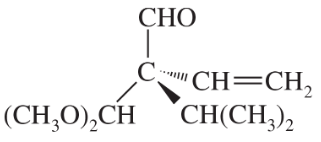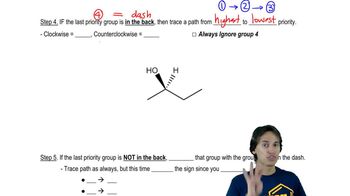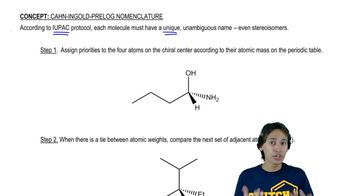Indicate whether each of the following structures is (R)-2-chlorobutane or (S)-2-chlorobutane:
e.
f.

 Verified step by step guidance
Verified step by step guidance Verified video answer for a similar problem:
Verified video answer for a similar problem:



 1:48m
1:48mMaster Why stereoisomers need their own naming system. with a bite sized video explanation from Johnny
Start learning